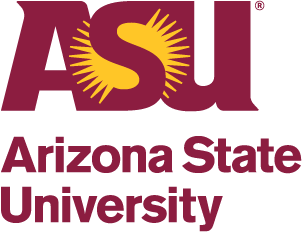Environmental Communication and Leadership (Graduate Certificate)
Communication, Environment, Environmental, Policy, leadership, sustainability
Scientists must go beyond publishing in journals if they want their research to be relevant to society. However, academic training rarely covers how to communicate with the press, the public, policymakers and other relevant stakeholders.
This certificate program in environmental communication and leadership gives graduate students in environmental disciplines the important skills they need to increase their influence and reach above and beyond academia.
- College/school:
The College of Liberal Arts and Sciences
- Location: Tempe
- STEM-OPT extension eligible: No
15 credit hours
Required Core (3 credit hours)
BIO 578 Environmental Leadership and Communication (3)
Electives (12 credit hours)
policy and management (3)
communication (3)
leadership (3)
open elective (3)
Additional Curriculum Information
Students must choose three credit hours from each of the policy and management, communication, and leadership categories with approval of the School of Life Sciences. If a student takes a course for fewer than three credit hours, the student must take more than one course in that category to meet the three-credit-hour requirement. Students should contact the School of Life Sciences for a complete list of courses.
For the open elective category, students choose one three-credit-hour elective course from any of the other three categories above. Students should note that only three credit hours of approved 400-level coursework can appear on the plan of study.
General university admission requirements:
All students are required to meet general
university admission requirements.
U.S. applicants | International applicants | English proficiency
Applicants must fulfill the requirements of both the Graduate College and The College of Liberal Arts and Sciences.
Applicants must have earned a bachelor's or master's degree in any field from a regionally accredited institution.
Applicants must have a minimum cumulative GPA of 3.00 (scale is 4.00 = "A") in the last 60 hours of their first bachelor's degree program or a minimum cumulative GPA of 3.00 (scale is 4.00 = "A") in an applicable master's degree program.
All applicants must submit:
- graduate admission application and application fee
- official transcripts
- proof of English proficiency
Additional Application Information
An applicant whose native language is not English must provide proof of English proficiency regardless of their current residency.
International students who need an F1 or J1 visa first need to apply to and be accepted into a graduate degree program before being considered for the certificate program. International students residing in the U.S. on other types of visas must adhere to all Graduate College policies and procedures regarding admission to be considered for admission to this certificate program.
Sample related fields include business, education, biology, geosciences, political science and English.
Applicants must have completed 12 undergraduate credit hours of natural science or social science coursework related to the environment at the time of application to the graduate certificate program. They must meet all other graduate admission requirements. Courses are reviewed by the School of Life Sciences graduate committee to ensure they fulfill this requirement.
Professionals skilled in communication as well as analytical and critical thinking are highly sought-after in public and private industry. Experience with conservation science, policy, management and leadership prepares graduates for careers in research, policy development, law and business management, among many others.
Career examples include:
- attorney
- ecologist
- professor
- research scientist
- science journalist or communicator
School of Life Sciences
|
LSA 212
sols.grad@asu.edu
480-727-3109
Admission deadlines
3 year programs
These programs allow students to fast-track their studies after admission and earn a bachelor's degree in three years or fewer while participating in the same high-quality educational experience of a 4-year option. Students should talk to their academic advisor to get started.
Accelerated master's
These programs allow students to accelerate their studies to earn a bachelor's plus a master's degree in as few as five years (for some programs).
Each program has requirements students must meet to be eligible for consideration. Acceptance to the graduate program requires a separate application. Students typically receive approval to pursue the accelerated master’s during the junior year of their bachelor's degree program. Interested students can learn about eligibility requirements and how to apply.


